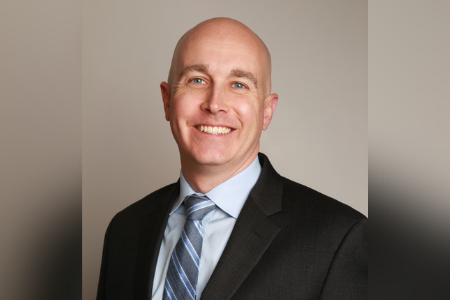

Contrary to popular belief, the global aviation industry has seen relatively few claims directly related to the COVID-19 pandemic to date.
The industry has received a small number of liability notifications, where passengers have sued airlines for cancelations or disruptions, but, overall, the dramatic reduction in commercial airline travel delivered fewer attritional claims than the industry is used to in a typical year. However, Allianz Global Corporate & Specialty (AGCS) global head of aviation Cristina Schoen explained that the industry “was not immune to larger losses during the course of the pandemic, with different regions seeing tragic accidents, emergency landings and hull losses to name a few.”
As air travel starts to take off again, insurers fully expect claims volume to rise in tandem. Dave Warfel (pictured), AGCS regional head of aviation, said the industry has “already started to see an uptick in claims” due to the rapid increase in passenger travel compared to the first year of the pandemic, when border closures, travel bans, and stay-at-home orders were widespread.
Moving forward through the COVID recovery period, there are a few key exposures that the AGCS global aviation team has an eye on, which are detailed in the specialty insurer’s ‘Aviation trends post Covid’ report.
Air rage, though not a new topic, is of increasing concern to both airlines and aviation insurers. According to AGCS, this is particularly problematic in the United States, where 3,000 incidents of unruly passenger behavior were reported to the Federal Aviation Administration in the first six months of 2021 – the majority involving passengers refusing to wear a mask. This marks a dramatic uptick from the pre-COVID annual average of 150 incidents. AGCS’s report notes that unruly passengers may later claim they were discriminated against by the airline in these cases, even if the passengers were in the wrong, making this a trend that insurers need to stay on top of.
“We’re also focused on the technical expertise and experience that’s required to safely operate aircraft,” Warfel told Insurance Business. “For pilots, most airlines have a lot of great infrastructure around pilot training, continuing to push new information out to their pilots, and getting them through simulators, so I think the pilot population has, for the most part, been able to maintain their experience.
“But in terms of the ground crews that are handling the parking, taxiing, and all the ground handling operations for the aircraft, there have been a lot of layoffs worldwide during the pandemic – so we’re very much keeping an eye on that as well. It’s a very important part of the operation, and it’s also an area where claims are generated, in terms of ground damage, ground collisions, and so on.
“So, we’re continuing to have dialogue with our airline clients around: ‘How are you onboarding new employees or bringing employees back who were perhaps furloughed? And how are you planning to maintain a strong safety culture, especially with the ground handling operations?’”
For several years, there have been concerns in the global aviation industry about a pilot shortage – an issue that could inflate in a post-pandemic surge in air travel. The AGCS report states that the industry faces a pilot shortage in the mid to long-term, and more than a quarter of a million pilots are required over the coming decade. Even before the COVID-19 pandemic, the tremendous increase in air travel - annual air passenger growth in China alone was 10%+ a year from 2011 – meant pilot demand was already outstripping supply.
“The pilot shortage existed prior to COVID, and it’s not going away any time soon. I think it’s going to perpetuate itself into the future,” said Warfel. “But the airlines are responding. Some of them have signed direct agreements with flight training facilities to start training the new generation of pilots, and some have actually purchased or started their own in-house pilot training schools to bring new pilots into the network, train them up, and build their hours.
“It’s clear that the airlines definitely see the pilot shortage as a risk on the horizon. In fact, it’s probably one of their largest impediments to growth – getting the population of skilled pilots up to a number where they can continue to meet the growing demand of air passengers.”
Despite these challenges, Warfel described the industry as “optimistic” about the future. During the pandemic, many airlines took the opportunity to carry out fleet upgrades and fleet purchase plans. Some are also introducing new routes into their catalogue, especially in Europe and Asia-Pacific. According to the AGCS report, over 1,400 new air routes are scheduled for 2021 – more than double those added in 2016 – driven by Europe (over 600) and Asia-Pacific (over 500), with regional airports set to be the main beneficiaries.
“While COVID-19 was a bit of an abrupt halt to growth, by and large, many airlines used it as an opportunity to re-gear and to focus on building for the future,” Warfel commented. “Some of their plans might have been deferred by 12 or 18 months, but we haven’t really seen a significant decline in long-term optimism. They’re not letting COVID sidetrack them from their growth plans.”
